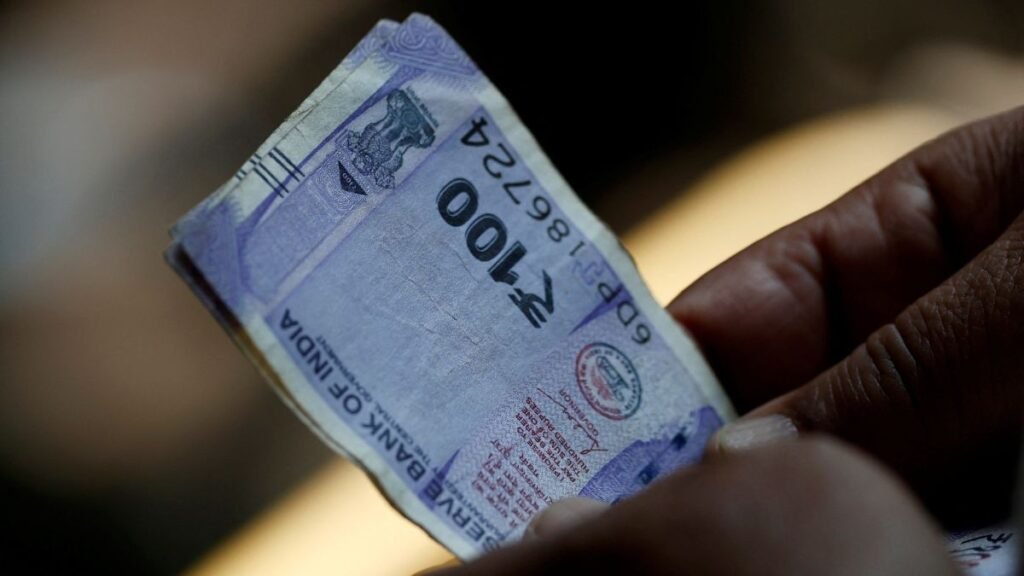India is all set to celebrate its 79th Independence Day this year.
As the years have gone by, so has
the mighty Indian rupee changed with the passage of time.
The journey of the rupee has reflected the evolution of the country – its history, culture, tradition and economy.
Let’s take a closer look
at the history of the Indian rupee.
The rupee in ancient times
The word rupee comes from the Sanskrit word rūpya (wrought silver). The rupee is mentioned in ancient texts, including those of Panini, a Sanskrit writer in the 5th Century BCE. Panini used the word rūpa to refer to a silver coin.
Ancient Indian kingdoms in the 6th century also had their own forms of currency that were the forerunners of the rupee. The Mahajanapadas of Gandhara, Kuntala, Kuru, Panchala, Shakya, Surasena, and Saurashtra all issued their own currency.
While these were made of silver and had a set weight, they came in all shapes and sizes and with different. Coins from Saurashtra bore a humped bull, Dakshin Panchala stamped a Swastika, and Magadha went in for a variety of symbols.
Chanakya, in his famed Arthashastra, mentions how the Mauryas under the great Emperor Chandragupta Maurya minted coins such as rupyarupa (silver) suvarnarupa (gold), tamararupa (copper) and sisarupa (lead).
It was Sher Shah Suri, after defeating Mughal emperor Humayun, who standardised the rupiya. Suri, during his reign from 1540 to 1545, issued a silver coin weighing 11.5 grams. The name was kept out of respect for India’s heritage.
Though the British East India Company had already set up in India and even attempted to introduce the sterling pound, the rupiya’s popularity remained unrivalled. Indeed the rupiya remained in circulation during the Mughal reigns, the era of the Marathas and in British India – a testament to Suri’s organisational skills and the enduring power of the currency.
By 1671, the British East India Company had given in. It began minting coins in the local style – using the rupiya. However, the value of the currency was not standard across India – which naturally created problems.
In British India and more modern times
It took till 1835 for the law to standardise the minting of the rupee. This came after the British colonial government passed the Paper Currency Act of 1861.
Each rupee was split into 16 annas, which in turn were split into four pice (paise) each. So, one rupee equated to around 64 pice (paise).
India continued to use silver and gold as currency till the 18th Century. However, the influx of European trading firms and the establishment of the banks resulted in the first paper currency being printed.
The Bank of Hindostan (1770– 1832) in Calcutta, the General Bank of Bengal and Bihar (1773–75), and Bengal Bank (1784–91), all issued their own forms of paper currency. This is when the use of paper notes rather than coins began taking hold.
The British colonial government forbade private banks from issuing their own currency. The Bank of England would take over responsibility for printing all of India’s currency notes for the next hundred years or so. It introduced paper notes in the denominations of Rs 10, Rs 20, Rs 50, Rs 100, and Rs 1,000.
This currency, known as the ‘Victoria Portrait’ series, depicted a small image of the British Queen on the top left. However, the denomination could only be used in certain areas known as ‘currency circles’ – Calcutta, Bombay, Madras, Rangoon, Kanpur, Lahore, and Karachi. These were unifaced, carried two language panels and were printed on hand-moulded paper.
In 1867, the Victoria Portrait series was withdrawn due to forgeries and replaced by the Underprint series. From 1903 to 1911, Rs 5, Rs 10, Rs 50 and Rs 100 were universalised.
The British government then introduced the ‘King’s Portrait’ series – beginning with George V in 1923. It was only in 1928 that India set up its first currency printing press in Nasik. In 1935, the Reserve Bank of India was established, which finally took responsibility for handling India’s money.
The RBI continued in much the same vein as the Bank of England. Its first currency note, a denomination of Rs 5, was issued three years later in 1938. It bore a portrait of King George VI. The RBI also introduced denominations of Rs 10, Rs 100, Rs 1,000 and Rs 10,000. It also reintroduced the Rs 1 note, which had been first brought out in 1917 due to the first World War and discontinued in 1926. In March 1943, the Rs 2 note would follow.
Post-Independence period
After Independence,
India found itself making a fresh start. However, it retained the currency and coins from the earlier period for a few years. At this time, 1 Rupee was 16 Annas, 1 Anna was 4 Pice and 1 Pice was 3 Pies.
India kicked off its new series on August 15, 1950. There had been some arguments about Gandhiji’s face replacing the King’s. However, it was not to be. Instead, it was the Lion Capital of the Ashoka Pillar that replaced George VI. The tiger was replaced by the corn sheaf. However, the value of the coinage remained unchanged. It was only in 1957 that India adopted the decimal system. The rupee was now defined as 100 naya paise instead of 16 Annas. In 1964, Naya was dropped entirely.
It was only in 1969 that Gandhiji’s face began being printed on currency notes of the denomination of Rs 2 and higher. Gandhiji would also feature on currency notes issued in 1996 of Rs 10 and Rs 500 – a replacement for the Lion Capital – and in 2005. New 50 paise, Rs 1, Rs 2 and Rs 5 stainless steel coins were also introduced. In 2010, the new symbol ₹ was introduced – a combination of the Latin letter R and the Devanagari letter र (ra).
The Reserve Bank has now introduced a central bank digital currency (CBDC), also known as an e-rupee. It has also hinted that it is looking at cross-border pilot projects. It remains to be seen where the rupee will go in the age of cryptocurrency.
With inputs from agencies






